Today, we’re going to edit an MP3. We’ll take a long MP3 and edit out one part of it. The original sound comes from a Youtube video. That video is about 14 minutes long but we only need to save a small portion. Here’s how we did it.
1. Here’s a link to the video. It’s quite funny, at least one part of it:
Wits: Paul F. Tompkins and Aimee Mann
2. Using Offliberty, we saved the sound portion of the video as an MP3. Here is the link that tells you how to do that:
Use Offliberty to Download Music for Free
3. Once the MP3 was downloaded, we opened Audacity, the free and fantastic sound recording/editing program. We have mentioned Audacity many times. Here’s a link to one of our posts about it: Recording LPs to Digital The program is available here: Audacity
4. Once Audacity was up and running, we then opened the MP3 file that we had just saved from Offliberty.
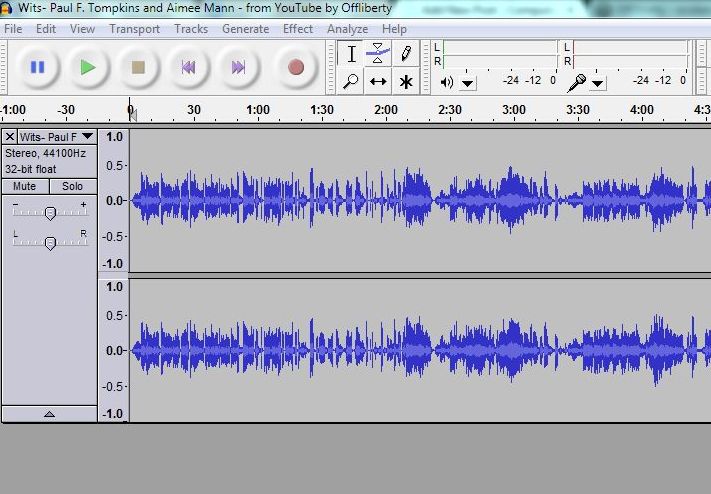
The buttons above the blue squiggly lines control the playback and recording of the open file. This particular file is 14 minutes long, more or less. We know that the part we want to clip out starts at the 8 minute mark. We grabbed the line that you see on the 0 in the photo above and dragged it over to the 8 minute mark.
5.
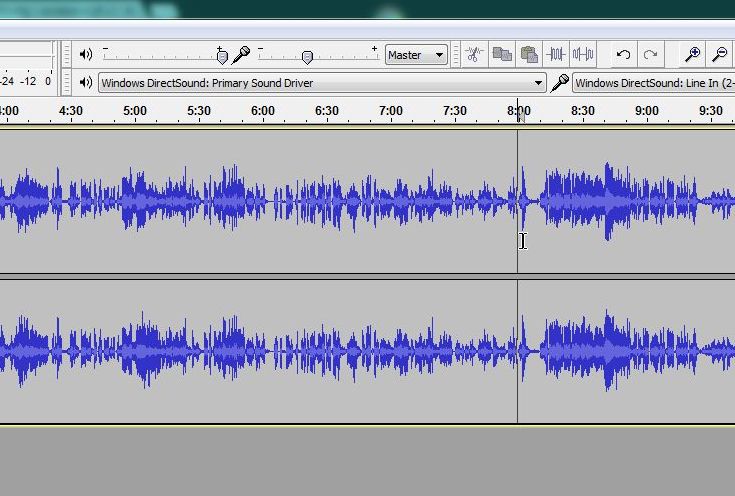
Once the cursor was sitting at the 8 minute point, we played the track and noticed when the part that we wanted was finished. At this point, all we were interested in was cutting out the bulk of the sound that we didn’t need. No sense in fine tuning just yet. Why? Because this is a long clip. In order for Audacity to show the whole thing, the blue lines are very compressed. Once we cut out the part we want, with some extra bits at the front and back, you’ll see what we mean.
6. Once you have the parameters of the clip you need, in other words the start and finish points, hover your mouse on the start line until you see the icon of a hand with a pointing finger, then drag the hand across the screen until you hit the end point. Here is the icon you want to see:

Here is the section that we want after we highlighted it::
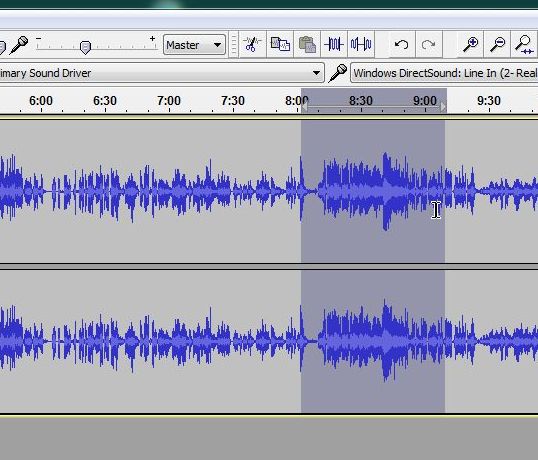
7. After you highlight the section, find the word Edit on the top menu of Audacity and click it. You will want to Cut the section out of the full 14 minute sound clip. Here’s what you want:
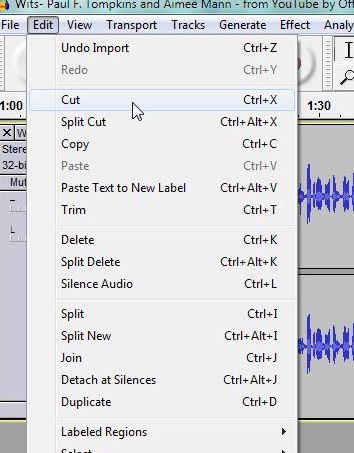
8. Once you click on the word Cut, Audacity cuts the selected section out of the full sound bite and holds it in memory until you paste it into a new Audacity file. Go up to the top and choose File, then New. A fresh new Audacity window will open up. Go up to the top again, click on Edit and choose Paste. Here are the two menus:
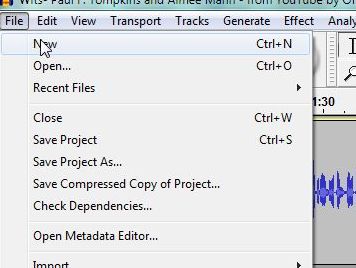
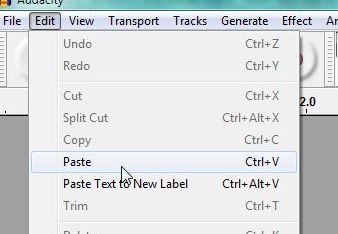
9. Now for the fine tuning. We still want a little bit of room before the sound we like, then a little bit after. Here’s how the section looks in Audacity:
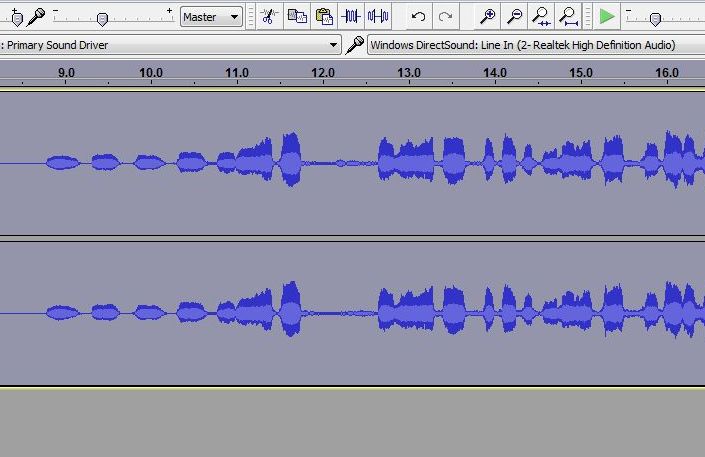
Since this section is only about a minute long, Audacity can spread it out farther across your screen, making it look far less compressed. The three or four bits at the start are actual words that Tompkins is singing.
10. Using the same technique are we did before, we cut out any extraneous bits that we don’t want at the beginning and end of the clip. Next, we will export that section as another MP3, a much smaller file than the original. Go up to File then Export. Like this:
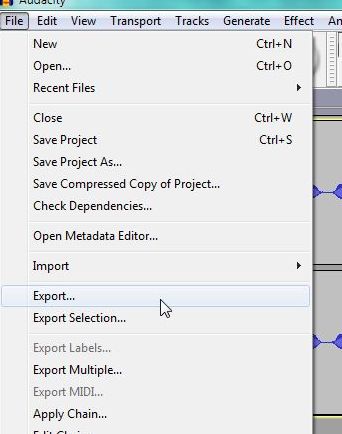
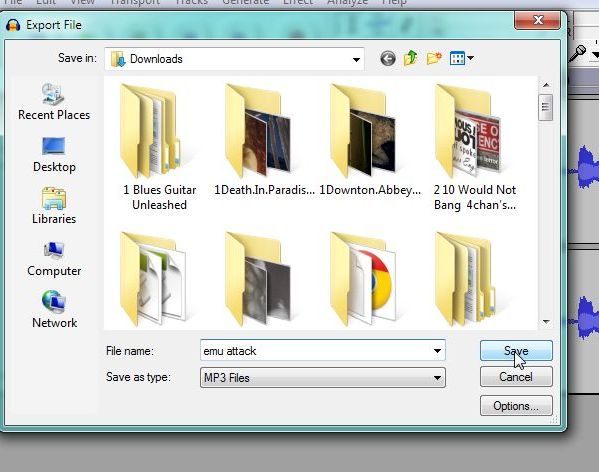
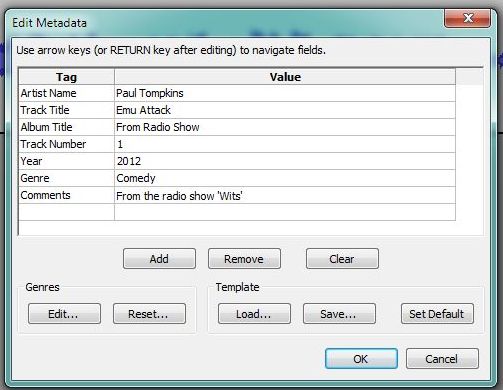
The final menu lets you put in your own Metadata, the information that you see on the screen of your player or stereo system when you play the particular file. In this case, we made up our own description for the clip. Click OK and you’re done.
That’s it! You can use this technique to edit out bits of family movies, podcasts, basically any and all kinds of sound bits and pieces. Once you do one editing job, you’ll find the next one much smoother. Let us know if you have problems. OK?
Thanks for reading!
